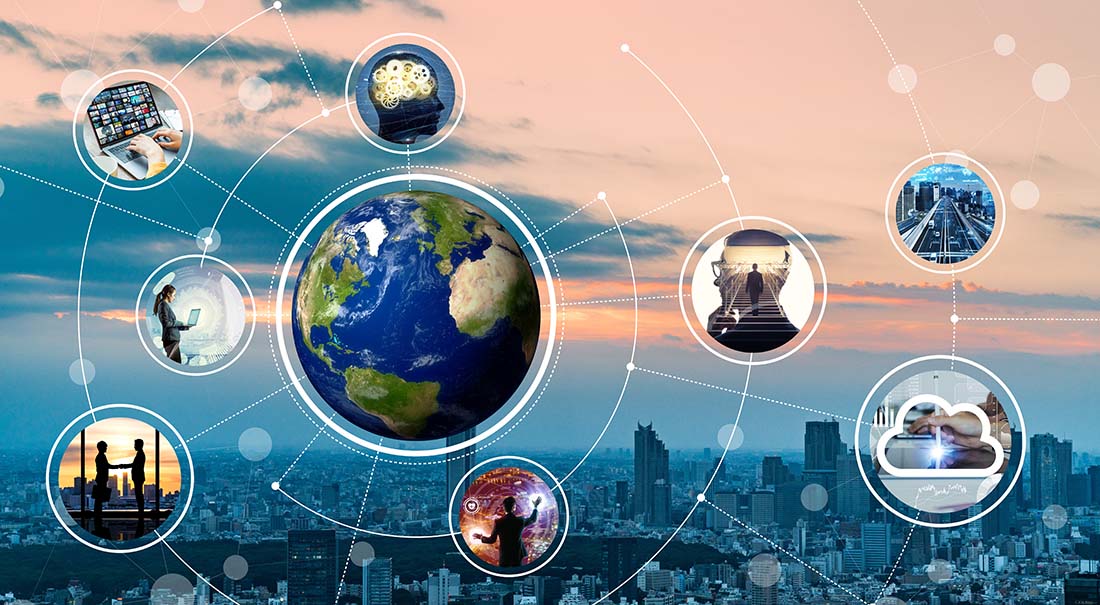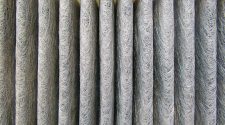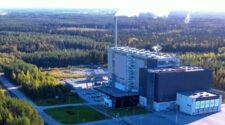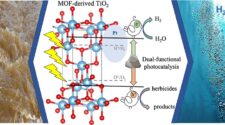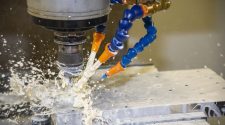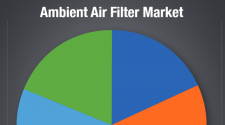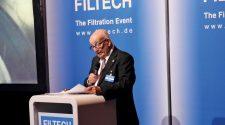In the dynamic and global filtration industry, news and information is breaking on a daily basis. International Filtration News is tracking stories relevant to our industry from air and gas filtration to liquid filtration and the various end-uses for filtration technology. Here we will post news stories relevant to filtration and its downstream applications on an ongoing basis. Please check back for regular updates. Please check back for regular updates. If you have news that you feel should be added to this summary report, please email it to Matt Migliore at mmigliore@inda.media.
Most recent update: July 30, 2021
Improving air quality reduces dementia risk, multiple studies suggest
Improving air quality may improve cognitive function and reduce dementia risk, according to several studies reported today at the Alzheimer’s Association International Conference (AAIC), June 26-30, 2021, in Denver and virtually.
Previous reports have linked long-term air pollution exposure with accumulation of Alzheimer’s disease-related brain plaques, but this is the first accumulated evidence that reducing pollution, especially fine particulates in the air and pollutants from the burning of fuel, is associated with lower risk of all-cause dementia and Alzheimer’s disease.
Both increasing levels of air pollution and increasing cases of dementia are worldwide public health crises. While research has linked air quality and cognition previously, these new data atAAIC 2021 explore how air pollutants might impact dementia and what reducing them might mean for long-term brain health. Among the key findings are:
- Reduction of fine particulate matter (PM2.5) and traffic-related pollutants (NO2) per 10% of the Environmental Protection Agency’s (EPA) current standard over 10 years was associated with 14% and 26% reductions in dementia risk, and slower cognitive decline, in older U.S. women. These benefits occurred in women regardless of their age, level of education, the geographic region where they lived and whether they had cardiovascular disease.
- Reduction of PM2.5 concentration over 10 years was associated with a reduced risk of all-cause dementia in French individuals by 15% and of Alzheimer’s disease by 17% for every microgram of gaseous pollutant per cubic meter of air (μg/m3) decrease in PM2.5.
- Long-term exposure to air pollutants was associated with higher beta amyloid levels in the blood in a large U.S. cohort, showing a possible biological connection between air quality and physical brain changes that define Alzheimer’s disease.
“We’ve known for some time that air pollution is bad for our brains and overall health, including a connection to amyloid buildup in the brain,” said Claire Sexton, DPhil, Alzheimer’s Association director of scientific programs and outreach. “But what’s exciting is we’re now seeing data showing that improving air quality may actually reduce the risk of dementia. These data demonstrate the importance of policies and action by federal and local governments, and businesses, that address reducing air pollutants.”
Read the full story at: https://www.alz.org/aaic/releases_2021/air-pollution-dementia-risk.asp
Source: alz.org
Mann+Hummel earns GM’s Supplier of the Year distinction for 26th time
GM recognized 122 of its best suppliers from 16 countries for performance in the 2020 calendar year. For the 26th time Mann+Hummel was recognized with this distinction.
The 2020 Supplier of the Year winners were selected by a global team of GM purchasing, engineering, quality, manufacturing and logistics leaders. Winners were chosen based on performance criteria in Product Purchasing, Global Purchasing and Manufacturing Services, Customer Care and Aftersales, and Logistics.
“I could not be prouder of our global team for again earning this very important recognition from General Motors for 2020. Especially during an extremely challenging year for our entire industry, our team remained focused on doing what was needed to support our customer General Motors,” said Mike Ternes, vice president OE Americas Mann+Hummel.
“With this being our 26th time receiving this award, it proves that Mann+Hummel delivers high performance across our business year after year. It also shows the special and long-term relationship we have with General Motors,” said Harald Späth, president and general manager Original Equipment at Mann+Hummel.
Source: mann-hummel.com
NX Filtration to construct membrane innovation center at High Tech Systems Park in the Netherlands
The High Tech Systems Park is the innovation campus that is evolving around the Thales site in Hengelo, the Netherlands. Companies located at the High Tech Systems Park share the mission of innovating faster through cooperation.
The High Tech Systems Park is located approximately 10 kilometers from NX Filtration’s current facilities. The purchase option concerns a plot of land of approximately 24,000 square meters, on which NX Filtration plans to build a new plant for the production of its innovative nanofiltration membranes in the next two to three years. This plant is expected to be able to, over time, accommodate a flexible set-up of up to ten spinning lines with a targeted total capacity of approximately 80,000 membrane modules per year, based on production in five shifts and depending on the product mix. NX Filtration believes that this new manufacturing facility, with ten spinning lines operating at full capacity, would require approximately 275 direct full-time employees.

“This is an important step in further scaling up our company in order to meet a growing demand for our innovative hollow fiber direct nanofiltration technology,” said Michiel Staatsen, CEO of NX Filtration. “With our technology we address global water scarcity and water quality challenges whilst offering strong sustainability benefits to our customers. The innovative ecosystem of the High Tech Systems Park is a great fit with NX Filtration and we are looking forward to collaborate with the other companies at campus.”
Debbie Brands, director of facility and real estate at the High Tech Systems Park, said, “NX Filtration strengthens the High Tech Systems Park with the unique combination of HighTech development and production, our common ties with the academic world and its location will strengthen the campus philosophy. With our strong focus on innovation, research and collaboration we believe we can offer an attractive environment for NX Filtration and we are looking forward to welcome them on the High Tech Systems Park.”
Source: nxfiltration.com
Suez and Petrobras sign membrane supply contract for 15 FPSO platforms
Suez Water Technologies & Solutions will be the exclusive provider of membranes used in seawater sulfate removal (SWSR) systems on 15 floating production, storage and offloading (FPSO) platforms operated by Petrobras located in the Campos, Buzios, Espirito Santo and Santos oil basins. The contract adds to Suez’s history of working closely with Petrobras for both on and offshore wastewater treatment applications, with Petrobras selecting Suez membrane technology to replace systems at two main refineries in the region in 2019.
“Petrobras is a leader when it comes to deep water offshore oil recovery,” said Kevin Cassidy, executive vice president, engineered solutions for Suez – Water Technologies & Solutions. “We are proud that they continue to rely on our membranes to prevent scale in injection wells and to better mitigate well souring by reducing sulfate.”
Source: suezwatertechnologies.com
Valmet to supply a boiler upgrade and a flue gas cleaning system to Stora Enso’s Anjala-Ingerois sites in Finland
Valmet will supply a boiler upgrade and a flue gas cleaning system to Stora Enso’s Anjala-Ingerois sites in Finland. The goal of the investment is to reduce the emissions and to ensure flexible use of different fuel mixtures in heat production, as well as to achieve better boiler performance and higher boiler efficiency.
The order is included in Valmet’s orders received in the second quarter 2021. The value of this kind of boiler rebuild is typically around EUR 15-20 million. The boiler outage is scheduled for the third quarter of 2022, but the installation work of the new baghouse filter will be done mainly before the shutdown. The project’s focus has been in finding ways to minimize the boiler shutdown time.
“We are looking for a new wider operation range with better operational performance, high reliability and compliance with future emission limits. We believe in Valmet´s capability to deliver the boiler upgrade which will meet our requirements,” said Ari Pöntinen, manager, Investments and Operations Development, Anjala Mill, Stora Enso.
“The upgrade will significantly extend the boiler’s lifetime. Many of the modifications include new waste-to-energy features to make the existing boiler more suitable for using solid recovered fuel. At the same time, modifications and replacements will improve availability, secure safe operation and reduce maintenance costs,” said Jouni Koskinen, senior manager, Sales and Technology, Rebuilds and Conversions, Valmet.
Valmet’s delivery includes an upgrade to an existing biomass and solid recovered fuel (SRF) fired BFB boiler, with a thermal power of 110 MWth. Maintenance type of replacements will be part of the work. The air emission control system modification includes a new baghouse filter with additive feeding.
Stora Enso is a global provider of renewable solutions in packaging, biomaterials, wooden constructions and paper.
Source: valmet.com
Saltworks’ advanced membrane plant shows 98% water recovery in pilot plant
Saltworks’ ultra-high recovery membrane pilot plant operated continuously around-the-clock for 90 days, achieving 98% water recovery from a complex, mixed industrial wastewater with high organics and variable water chemistry.
The advanced pilot plant crossed the Pacific Ocean with a quick turnaround after its cooling tower blowdown trial at an agri-chem facility, for which Saltworks is now designing and building a full-scale, permanent installation.
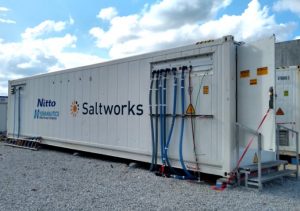
Saltworks’ pilot team operated the plant both on-site and remotely despite the ongoing COVID-19 pandemic. Nitto HYDRANAUTICSTM PRO-XP1 membranes were employed along with Saltworks’ advanced process technologies.
The system treated variable water quality originating from multiple streams, consistently achieving 98% recovery and concentrating a sodium sulfate-rich brine to over 200,000 mg/L total dissolved solids (TDS). The 2% brine volume is small enough such that direct solidification becomes viable, avoiding the need for an energy-intensive evaporator-crystallizer.
As the need for ultra-high recovery industrial water recycling grows, Saltworks’ envisions end-user industries from microelectronics to brackish water desalination, lithium refining, and oil and gas processing.
Source: saltworkstech.com
Evonik supplies membrane technology in support of Germany’s largest biogas plant
In Germany’s largest biogas plant so far, plant operator EnviTec Biogas relies on Evonik’s patented SEPURAN Green membrane technology for efficient biogas upgrading.
At the EnviTec Biogas AG BioEnergie Park Güstrow (Germany), biogas will be liquefied into 9,000 tons of biomethane per year (Bio-LNG) beginning in the fall of 2022. The project of the biogas all-rounder based in Lohne and Saerbeck (Germany) is exemplary for supplying bio-LNG onsite as another immediately available renewable energy source in Germany. The climate-neutral fuel is made available for heavy-duty transport via the filling station networks of service station operators such as Liqvis and Liquind.
In the future, the approximately 500 GWh biogas processing plant in Güstrow will process 150,000 metric tons of predominantly agricultural waste into high-purity bio-LNG. In addition, the carbon dioxide (bio-CO2) separated from the biogas will be liquefied and made usable and storable as a natural raw material.
“We interconnect the membranes using Evonik’s patented 3-stage process for maximum efficiency in biogas upgrading, replacing the already obsolete pressurized water scrubbing technology,” said Olaf von Lehmden, CEO of EnviTec Biogas AG. “For more than ten years, we have been working with Evonik to implement biogas projects worldwide in various plant sizes and can look back on a success story that now includes more than 60 references.”
The SEPURAN Green hollow-fiber membranes from Evonik remove the carbon dioxide from the raw biogas, turning it into high-purity biomethane. The membranes are made of specially developed Evonik high-performance polymers that are highly resistant to pressure and temperature.
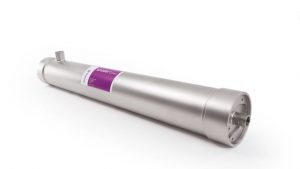
Compared with other biogas upgrading processes, such as pressurized water scrubbing, pressure swing adsorption, or amine scrubbing, Evonik’s membrane technology has significant advantages in that it requires comparatively little energy and does not need any auxiliary materials or chemicals. It produces no waste or wastewater that would otherwise have to be treated and disposed of.
Source: membrane-separation.com
Study finds Camfil air purifiers have four-fold increase in the removal of aerosols in poorly ventilated spaces
A study conducted by Camfil in conjunction with University College Dublin (UCD) and the Mater Misericordiae University Hospital (MMUH) has found that Camfil’s City M air purifiers remove aerosols from poorly ventilated rooms at four times the normal rate.
Experiments conducted by UCD’s Dr. Kevin Nolan of the School of Mechanical and Materials Engineering used the air purifiers to clean a 4m x 2.5m x 2.6 m room of aerosol. The room was filled using a smoke wand for 30 seconds. The experiments found that when untreated, aerosols dissipated over 500 seconds. When the City M air purifier was at its maximum speed, the aerosol was cleared in under 160. When a small heater was used to provide added natural convection flow, the untreated aerosol particles dissipated in 800 seconds, which was reduced to below 200 seconds with the use of Camfil City M.
“We are very grateful to Camfil for allowing us to use their City M air purifiers for these experiments,” said Dr. Nolan. “Since the outbreak of COVID-19, it has become more and more important to test new methods of keeping our indoor spaces clean and free from airborne particles. Camfil’s City M air purifiers have proven to be highly effective in removing the presence of aerosols quickly and efficiently, creating a healthier and safer environment. Conducting these experiments at the Mater Misericordiae Hospital in Dublin has allowed us to display how hospitals can benefit from the use of top-quality air purifiers to protect patients and staff.”
High-Efficiency Particulate Air (HEPA) technologies such as the City M air purifier are capable of reducing the circulation of airborne particulate matter, including airborne aerosols that transmit COVID-19 or, like PM2.5, are a leading cause of cancer.
“Since 1963 Camfil has been committed to educating the public about the importance of clean air, and to providing top quality solutions to protect people, processes and the environment,” said Paul Flanagan, Managing Director of Camfil Ireland. “The past year and a half have made our mission and purpose more important than ever before, as the idea of clean air has become a top priority for people. While COVID-19 is likely to be a temporary disaster, air pollution has become a permanent fixture for people all over the world. While removing the harmful pollutants is not an easy task, protecting our environment is; we are determined to show people that installing HEPA filters into buildings can and will decrease the risk of inhaling harmful pollutants. This fantastic study by UCD is proof of the success of Camfil’s filters.”
Source: camfil.com
Andritz acquires parts of Air Quality Control System (AQCS) business from GE Steam Power
International technology group Andritz has signed an agreement with GE Steam Power to acquire parts of its Air Quality Control System (AQCS) technology, including the technology center in Växjö, Sweden.
Closing of the transaction was reached on 1st of July 2021.
Under terms of the deal, Andritz takes over the product portfolio for industrial dedusting (electrostatic precipitators – ESP, fabric filters (FF) and wet ESP), dry/semi-dry flue gas treatment, and industrial scrubbing, including condensation scrubbers and low-temperature heat recovery solutions. The acquisition also includes the AQCS main location in Växjö, Sweden, as well as employees involved in this business in Sweden and Finland. Andritz acquires the respective intellectual property (IP), including patents, references, and trademarks, for global use with some exceptions. For parts, upgrade & service business in India, Bangladesh, Sri Lanka, the USA, and Canada as well as for FGD products in India, Bangladesh and Sri Lanka GE Steam Power will continue business as a licensee of Andritz.
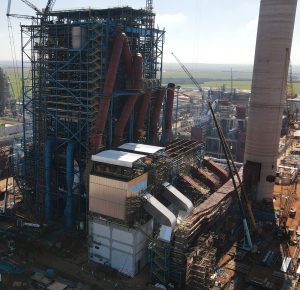
The dedusting portfolio acquired – especially the ESP and FF technologies – completes Andritz’s air pollution control capabilities in the important pulp, metals, mining, and power markets.
Andritz is now able to offer ESPs and Switch-Integrated Rectifier (SIR) technology from a single source, thus gaining access to service and maintenance business for an installed base of more than 2,000 plants.
Source: andritz.com
Korea Institute of Civil Engineering and Building Technology develops alternative seawater desalination nanofiber membrane
The Korea Institute of Civil Engineering and Building Technology (KICT) has announced the development of a stable performance electrospun nanofiber membrane to turn seawater into drinking water by a membrane distillation process.
The research team, led by Dr. Yunchul Woo, has created co-axial electrospun nanofiber membranes fabricated by the alternative nano-technology of electrospinning. The technology can prevent wetting issues and also improve long-term stability in the distillation process.
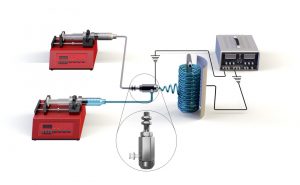
The research team used poly(vinylidene fluoride-co-hexafluoropropylene) as the core and silica aerogel mixed with a low concentration of the polymer as the sheath to produce a co-axial composite membrane and obtain a superhydrophobic membrane surface. Silica aerogel exhibited a lower thermal conductivity compared with that of conventional polymers, which led to increased water vapor flux during the membrane distillation process due to a reduction of conductive heat losses. The research team applied the membrane distillation process using the fabricated co-axial electrospun nanofiber membrane for 30 days, performing at a 99.99% salt rejection.
“The co-axial electrospun nanofiber membrane have strong potential for the treatment of seawater solutions without suffering from wetting issues and may be the appropriate membrane for pilot-scale and real-scale membrane distillation applications,” said Dr. Woo.
The membrane is suitable for long-term membrane distillation applications with a low sliding angle, low thermal conductivity, the ability to avoid temperature polarization, and a reduction in wetting and fouling problems whilst maintaining super-saturated high water vapor flux performance.
Source: kict.re.kr
Ahlstrom-Munksjö to restart Turin, Italy, plant to support strong demand for filtration media
Ahlstrom-Munksjö will restart one of its saturator in its Turin plant in Italy to support strong demand for high-performance filtration media.
“Based on current strong customer demand, we see a need to expand our saturating capacity,” said Giuseppe Costa, vice president of Filtration EMEA and APAC. “We have evaluated various options and came to the conclusion that restarting the saturator we already have in place in Turin is the quickest and most reliable way to bring qualified capacity to the marketplace in a very short period,” he added.
This decision follows a series of investments announced by the group in the last few years to strengthen the company’s industrial platform and support demand growth in the industrial and engine filtration industry globally. Recent investments to strengthen the platform include a new saturator in Madisonville, Kentucky, U.S.; a machine rebuilt in Binzhou, China; capacity expansions in Fabriano, Italy and Malmedy Belgium; and a new micro glass line in Turin, Italy.
“Being able to provide additional saturating capacity to our customers in such a short time frame is great news,” said Willy Bordignon, vice president Filtration Americas. “It will enable us to support our customer needs moving forward, both in industrial and engine filtration not only in the EMEA but also in other regions including the Americas,” he continued.
The saturator is expected to restart no later than October 2021.
Source: ahlstrom-munksjo.com
Celeros appoints Tommy Kassem as Chief Commercial Officer
Celeros Flow Technology has appointed Tommy Kassem as Chief Commercial Officer, effective July 1, 2021.
Tommy brings over 25 years of experience to the role, gained from his background spanning the energy industry – including working with EPCs, end users, national and international companies. He has taken on roles with progressive leadership responsibility throughout his experiences with GE and Baker Hughes, most recently serving as vice president for Baker Hughes’ Oilfield Services business leading the Russia-Caspian region.
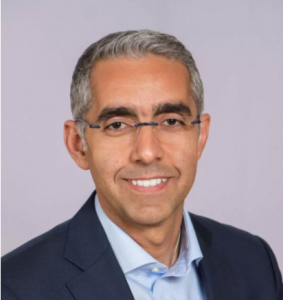
Tommy will lead Celeros FT’s commercial efforts to add value for customers at every stage of the operational lifecycle through our innovative products and solutions – extending uptime, elevating productivity, and lowering the overall cost of ownership.
Commenting on this strategic appointment, Celeros CEO said: “We are excited to welcome Tommy to Celeros FT. His extensive global experience, ability to drive sales organizations and depth of technical knowledge with customer requirements will be valuable in our efforts to deepen our market reach with our solutions, while expanding the markets we serve as we advance our offerings. Our purpose and mission are clear, and our strategy is well defined. I am confident that Tommy will be a success in helping to drive our growth and double down our efforts to providing a world-class customer experience.”
Source: celerosft.com
ASHRAE hosts successful virtual conference; attracting 970 attendees with 100+ live and on-demand sessions
ASHRAE hosted its 2021 Virtual Annual Conference June 28-30, which saw 970 virtual global registrants. The conference featured over 100 live and on-demand sessions with updates from the society’s leadership and virtual networking events. Top sessions included: Fundamentals of Climate Change (Seminar 1); Keynote: The COVID-19 Pandemic and Built Environment: Update on ASHRAE’s Response; and the Meeting of the Members.
Other highly attended sessions included topics on IAQ, energy efficiency and ASHRAE standards.
“The 2021 ASHRAE Virtual Annual Conference brought our community of industry professionals together for a full slate of highly relevant and valuable content,” said 2021-22 ASHRAE President Mick Schwedler P.E., Fellow ASHRAE, LEED AP. “The conference provided an opportunity to learn, share, and explore new ways to translate research and knowledge into built environment solutions that impact everyone. We are truly fortunate to be a part of this strong community that supports each other to accomplish great things. It is the power of this community that will propel us to future successes.”
Day one included a final State of the Society and farewell address from 2020-21 ASHRAE President Charles E. Gulledge III, P.E., as well as a Secretary’s Report from ASHRAE Executive Vice President and Society Secretary Jeff Littleton.
In response to the COVID-19 pandemic, ASHRAE’s Epidemic Task Force (ETF) presented an update on their global headlining work to share guidance on minimizing the airborne transmission of SARS-CoV-2. The keynote titled “The COVID-19 Pandemic and Built Environment: Update on ASHRAE’s Response,” included a brief history and status of the ETF, as well as a higher-level discussion on non-HVAC issues such as vaccines, data, transmission routes and reopening.
ASHRAE’s Task Force on Building Decarbonization also gave an update on their progress during the conference. The task force was formed to develop technical resources and provide guidance in mitigating the negative impact of buildings on the environment and to the inhabitants of our planet.
On the final day of the conference, President Schwedler gave his address on the Society theme for the coming year, “Personal Growth. Global Impact. Feed the Roots.” His presidential address manuscript, presentation and video can be found at ashrae.org/president.
In related news, ASHRAE also announced its 2021-2022 president, officers and directors.
Elected officers who will serve one-year terms are as follows:
- President-Elect: Farooq Mehboob, P.E., Fellow Life Member ASHRAE, Principal Consultant, S. Mehboob & Company Consulting Engineers, Karachi, Pakistan
- Treasurer: Ginger Scoggins, P.E., Fellow ASHRAE, Principal, Engineered Designs Inc., Cary, North Carolina
- Vice President: Don Brandt, CEM, Life Member ASHRAE, Instructor, Phoenix, Arizona
- Vice President: Dunstan Macauley III, Member ASHRAE, Director of Mechanical Engineering, Setty & Associates, Rockdale, Maryland
- Vice President: Sarah Maston P.E., BCxP, Member ASHRAE, President, Green Footprints Commissioning, Inc., Hudson, Massachusetts
- Vice President: Tim McGinn, P.Eng., HBDP, Member ASHRAE, Principal, McGinn Technical Services, Calgary, Alberta, Canada
ASHRAE introduced its newest Directors and Regional Chairs who will serve three-year terms from 2021–24:
- Region I Director and Regional Chair: Steven Sill, Plant Superintendent, New York State Department OPWDD, Sterling, New York
- Region II Director and Regional Chair: Ronald Gagnon, President, Concept-R, Sorel-Tracy Quebec City, Canada
- Region III Director and Regional Chair: Mark Tome, P.E., Development Engineer, Sitelogiq, Harrisburg, Pennsylvania
- Region XI Director and Regional Chair: N. Eileen Jensen, P.E., Mechanical Engineer, Bonneville Power Administration, Vancouver, Washington
- Region-at-Large Director and Regional Chair: Richie Mittal, Managing Director, Overdrive Engineering Pvt. Ltd., New Delhi, India
ASHRAE also introduced its newest Directors-at-Large (DALs):
- Dru Crawley, Fellow/Director, Building Performance Research, Bentley Systems Inc., Washington, D.C.
- Art Giesler, Director of Technical Sales, PermAlert ESP, Colleyville, Texas
- Kishor Khankari, Ph.D., President, AnSight LLC., Ann Arbor, Michigan
- Heather Platt Gulledge, P.E., Senior Project Manager, Dewberry, Summerfield, North Carolina. (Alternate Director-at-Large)
Source: ashrae.org
International Desalination Association announces conference focused on brine mining and zero liquid discharge
The International Desalination Association (IDA), in partnership with the renowned Desalination Technology Research Institute (DTRI) and Saline Water Conversion Corporation (SWCC), announced March 21-23, 2022 as new dates for the three-day Specialty Conference on Ocean Brine Mining for Desalination, to be held at the Intercontinental al Jubail Resort, in Jubail, Saudi Arabia.
Jointly organized by the IDA and DTRI of SWCC, under the patronage of the Minister of Environment, Water, and Agriculture of the Kingdom of Saudi Arabia, this specialty conference is a forum for technical experts, scientists, applied researchers, practitioners, and innovators. The aim is to share their latest technologies and experience in brine concentration extraction of valuable minerals. Brine mining is a new desalination method focused on Zero Discharge & Cost (ZD&C).
The event aims to capture a new industry trend of turning brine generated by desalination plants from a waste product into a sustainable and valuable alternative source of minerals currently obtained by terrestrial mining.
“Our vision for the future of the desalination industry is to harness the value contained in seawater brine and to use it for subsidizing the production of desalinated water, thereby transforming desalination into the lowest cost freshwater production technology in the world,” said H.E. Abdullah Al-Abdul Kareem, Governor of Saline Water Conversion Corporation.
The conference’s Day 1 Program is entitled “Technologies for Brine Concentration and Zero Liquid Discharge.” It explores themes such as State of the Art of Thermal Brine Concentration, Brine Concentration for Harvesting of Minerals, and The Future of Brine Concentration – Next Generation Technologies. Day 2, “Technologies for Mining of Minerals and Metals from Brine,” focuses on state-of-the-art of brine extraction technologies. Day 3 has a session on “Case Studies for Desalination Brine Mining” showcasing projects for successful brine mining, an Expert Forum on “Brine Mining Challenges and Solutions,” and a visit to the SWCC Brine Mining Research Facility in Jubail and the 320,000 m3/day Ras Al Khair desalination plant.
Technical Program Topics include:
1. State of the Art of Thermal Brine Concentration
2. Advanced Technologies for Membrane Brine Concentration
3. Non-thermal & Non-membrane Brine Concentration Technologies
4. Brine Concentration for Harvesting of Minerals
5. Brine Concentration for Harvesting of Rare Metals
6. Brine Concentration for Zero Liquid Discharge
7. Case Studies for Brine Concentration
8. Case Studies for Zero Liquid Discharge
9. Lowering Cost and Energy Use Barriers for Brine Concentration
10. The Future of Brine Concentration – Next Generation Technologies
Source: idadesal.org


